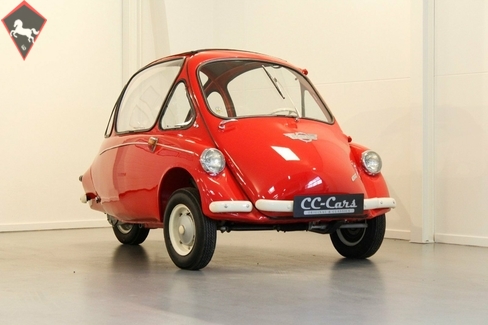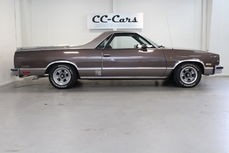Heinkel Kabine 200 1963
General description :
Nice but older restauration - both engine and cosmetical, Runs great and fun to drive, Swedish title, See more than 100 classic and vintage cars at our website http://www.cc-cars.dk or call us for further information
https://www.cc-cars.dk/UK/car.aspx?number=1299667329
1963 Heinkel Kabine 200 is listed sold on ClassicDigest in Denmark by CC Cars for €17600.
Car Facts
Car type : Car Make : Heinkel Model : Kabine 200 Engine size : 0.0 Model Year : 1963
Sold
Seller Information
Sold
Other cars listed for sale by this dealer
About Heinkel
The Heinkel Bubble Car, a fascinating chapter in the history of microcars! Let me take you on a journey through the story of this quirky little vehicle.The Post-War Era:
Our story begins in post-World War II Germany, a time when the country was recovering from the devastation of the war. The need for affordable and efficient transportation was pressing, and this is where the Heinkel Bubble Car comes into play.
The Engineer's Vision:
Ernst Heinkel, a renowned aeronautical engineer, turned his attention to the automotive world. He aimed to create a small, economical, and practical car that could serve as a reliable mode of transportation for the masses.
The Design:
The result of Heinkel's efforts was the Heinkel Kabine, also known as the Heinkel Bubble Car. It was a petite, three-wheeled, microcar that looked like a small aircraft canopy on wheels. The name "Bubble Car" was fitting, given its bubble-like design.
Power and Efficiency:
The Bubble Car was powered by a small, single-cylinder two-stroke engine, which provided just enough power to propel this tiny vehicle. It was highly fuel-efficient, making it an economical choice for the post-war period when resources were scarce.
Three-Wheeled Wonder:
One distinctive feature of the Heinkel Bubble Car was its three-wheel configuration. It had a single wheel in the front and two in the back, which was a common design for microcars of the time. This setup allowed it to be categorized as a motorcycle in many countries, making it more accessible for buyers.
The "Scooter with a Roof":
Some affectionately referred to the Bubble Car as a "scooter with a roof" due to its compact size and motorcycle-like controls. It was a simple vehicle designed for short commutes and city driving.
Legacy and End of Production:
The Heinkel Bubble Car was a success, not only in Germany but in various other countries as well. It found its way onto the streets of Europe, providing an affordable and practical means of transportation.
However, by the early 1960s, the microcar market began to decline as larger, more conventional cars became more affordable. The Bubble Car era was coming to an end, and production ceased in 1966.
A Quirky Piece of History:
Today, the Heinkel Bubble Car is remembered as a quirky and charming relic of the post-war era. It represents an era when innovative engineers like Ernst Heinkel ventured into new frontiers, designing novel solutions to the transportation challenges of the time. It's a testament to the ingenuity of that period and a reminder of how even the smallest vehicles can leave a lasting impression in the annals of automotive history.
And there you have it, the story of the Heinkel Bubble Car, a delightful little bubble on wheels that made its mark in the automotive world. Quite the unique chapter in the history of cars, wouldn't you say?



















